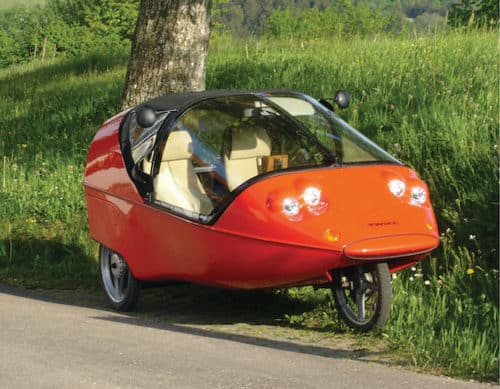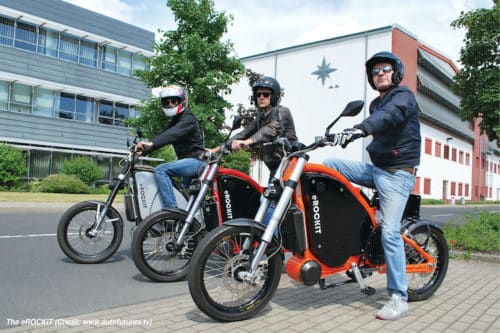Due to the increasing pollution being generated from diesel and petrol-based transportation modes, several companies and governments have come forward with the idea of developing and using human hybrid electric vehicles. A human hybrid electric vehicle is a system that makes use of human power in an electric vehicle.
Human muscle power is reliable, almost free, and healthy to use. It helps in carrying out the daily activities with ease and comfort. Moreover, the potential of human power increases as the human population grows.
The advent of modern civilisation supported by the use of different machines and means of transportation has made mankind to stay away from using human muscle power.
Transportation is a non-separable part of any society, and it exhibits a very close relation to the style of life, range and location of activities, and goods and services that are available for consumption.
The growth in the transportation sector has made it possible to change the ways of living and how societies are organised and therefore have a great influence on the development of civilisations. Modern civilisation is totally dependent on different modes of transportation for not only travelling to different places but also for trading economic resources like raw materials, fuels, food, and manufactured goods from their place of origin to place of use.
Pollution problem
The use of a bicycle, which is currently the only human-friendly, cost-effective, and pollution-free mode of transportation, has reduced just to an exercise device or for leisure trips. Transportation is a major source of air pollution as cars, trucks, and buses powered by fossil fuels are major contributors to air pollution. According to pollution studies, it is said that the transportation sector contributes to more than half of nitrogen oxides into the air and is a major source of global warming emissions.
Further, studies have also linked pollutants from vehicle exhaust to have adverse impacts on nearly every organ in the body. With the so-called progress of civilisation or modernisation, not only various types of transportation vehicles like automobiles (motorcycles, scooters, and cars), buses, trains, trucks, helicopters, watercraft, spacecraft, and aircraft have flooded the market, but also their general and personal purchase and use have reached a stage where they have become the biggest sources of unwanted environmental pollution.
Going electric
Feeling concerned with degrading environmental conditions due to the pollution being generated from diesel and petrol-based transportation modes, several companies and governments have come forward with the idea of developing and using electric vehicles (EVs).
This shift was also possible due to reduced terminations, reconnections and arrearages, more stable electric energy prices, a more resilient and reliable electric energy system, lower transmission and distribution costs, and utility insurance savings.
There are a number of benefits of using EVs over conventional petrol/diesel vehicles like these are cheaper to run and maintain, better for the environment, use eco-friendly materials, and many more. The growing need for energy and degrading environmental considerations in the last few years have given direction to new paradigms of mobility and transportation with an increased interest in light electric vehicles (LEVs). In this context, electrically power-assisted cycles (EPACs) have received great attention. Several efforts have been made in order to improve their performance in terms of autonomy, weight, aesthetics, and feeling with the driver.
Technological developments taking place over the last few decades towards designing and developing efficient, long-lasting, and cost-effective batteries have also strengthened the move towards the emergence of EVs in the market. At present, only two-wheelers like scooters and motorcycles have been successful as electric vehicles, but it is expected that in the coming times, we will have fully electric buses, trucks, trains, and airplanes as well.
With the advanced batteries having more charge capacity, long life, and light weight, this will be possible. Over the last two decades, lithium-ion battery technology has worked its way to the forefront of the automotive market. But EV battery technology continually pushes the boundaries of lithium-ion batteries’ ability to provide ample power, longevity, and safety.
Fully battery-powered electric vehicles (BEV) rely exclusively on electric power to drive, while plug-in hybrid electric vehicles (PHEVs) and full hybrid electric vehicles (FHEV) work in tandem with ICEs to generate and provide power. All these vehicle types require different levels of battery complexity and size. Different EV vehicles demand different battery capacities.
While designing EV battery systems, engineers also consider charging speed, charge cycle ability, degradation, chemistry, and safety. Energy and power density thresholds have been realised in most EV applications, yet vehicle manufacturers are constantly tweaking module and cell sizes for optimum performance levels. Regardless of the lithium-ion battery cell and module sizes, the high-voltage battery systems that power EVs require meticulously designed battery management systems (BMS) to ensure maximum power and safety.
Human hybrid electric
Human-powered transport means to make use of human muscle power for the transport of person(s) and/or goods. This was the only system of transportation before the invention of the steam engine by James Watt, which then contributed substantially to the industrial revolution. With time, motorisation has increased speed and load capacity, but still human-powered transport in many of its forms remains popular due to several reasons such as cost and convenience.
While showering praise on EVs, we ignored the effects of ever-increasing pollution that is being produced during the generation of electric energy, an essential requirement to charge batteries of EVs as well as in the manufacturing of batteries. In order to minimise this impact, engineers are thinking to imbibe human power in electric vehicles by developing human hybrid electric vehicles.
A human hybrid electric vehicle is a system that makes use of human power in an electric vehicle called a hybrid human-powered vehicle, whose drivetrain consists of a person, an electric motor/generator, and one or more electricity storage device(s). Many developments have already taken place towards the development of human hybrid electric vehicles, and time is not far when we will have such transport vehicles all around us.
Developmental status
1. TWIKE (a Tesla company project) is the world’s oldest only human electric hybrid car. This car was developed and produced initially in Switzerland, but then production moved to Germany after the initial investors became insolvent in 2002, and a group of German importers joined together to purchase the equipment and continue with TWIKE production under the company named FINE Mobile.

TWIKE is an ambitious concept today as it was back when it first became a rare oddity in the world of transportation. Presently, instead of a standard steering wheel, navigation of the car is done through a joystick. Under the driver’s feet is the direct drive pedal power system, which transfers human power input straight to the drivetrain. The system also captures energy from regenerative braking. At higher speeds, the vehicle is powered mostly by onboard lithium-ion batteries. The top speed reported to be achieved with the car at present is around 89 to 104 kilometres per hour.
Similar projects are continuously being reported by various companies. For instance, a Minnesota-based company has built a three-wheeled hybrid electric vehicle weighing about 317kg that gets 121km per charge, and the vehicle is street legal and considered a motorcycle. Its carbon fibre chassis looks like a kayak and is reinforced with structural foam, similar to an airplane. The vehicle uses a regenerative brake system, which feeds the electricity back into the batteries when the brakes are applied. It also has a solar panel mounted on the roof.

2. An electric motorbike with pedals, eRockit (developed and produced in Hennigsdorf in Brandenburg, Berlin), is described as a ‘human hybrid’ as it’s powered by a combination of human and electric drives. The eRockit puts the rider back into the centre of mobility of moving, depending on the rider’s wish. Further, the use of a smart pedal concept gives the rider an opportunity to act with a human hybrid bike more conveniently and comfortably.
The bike’s clutch-free and intuitive pedal power system makes eRockit safe to drive. It is an emission-free ride with a hundred per cent emotion.
The bike can reach a speed of close to 55.9mph, and its battery range is over 120 kilometres. With this new technology of human hybrid electric vehicle, a person can travel between 5km and 45km every day together with fun riding. About thirty prototypes have already been tested for more than 100,000 kilometres in total, and the market version will be available soon.

Conclusion
In a world that is wholly dependent on transportation on one hand and fossil fuels on the other, harvesting human kinetic energy along with the future of efficient, light, cost-effective electric vehicles will provide an era of environment-friendly and healthy transportation mode—human hybrid electric vehicles. By using a pedal-assisted drivetrain system, we will be able to reduce the consumption rate of battery power by the motor, which will increase the battery life.
The reason why many people are inclined towards conventional vehicles is that they can reach places without having to do more than pressing on the gas pedal. In short, developing people-friendly human hybrid electric vehicles will definitely prove to be an attractive mode of transportation in the future.
Dr S.S. Verma is professor at Department of Physics, Sant Longowal Institute of Engineering and Technology, Sangrur, Punjab





You say that Twike is a Tesla project? I don’t think so…